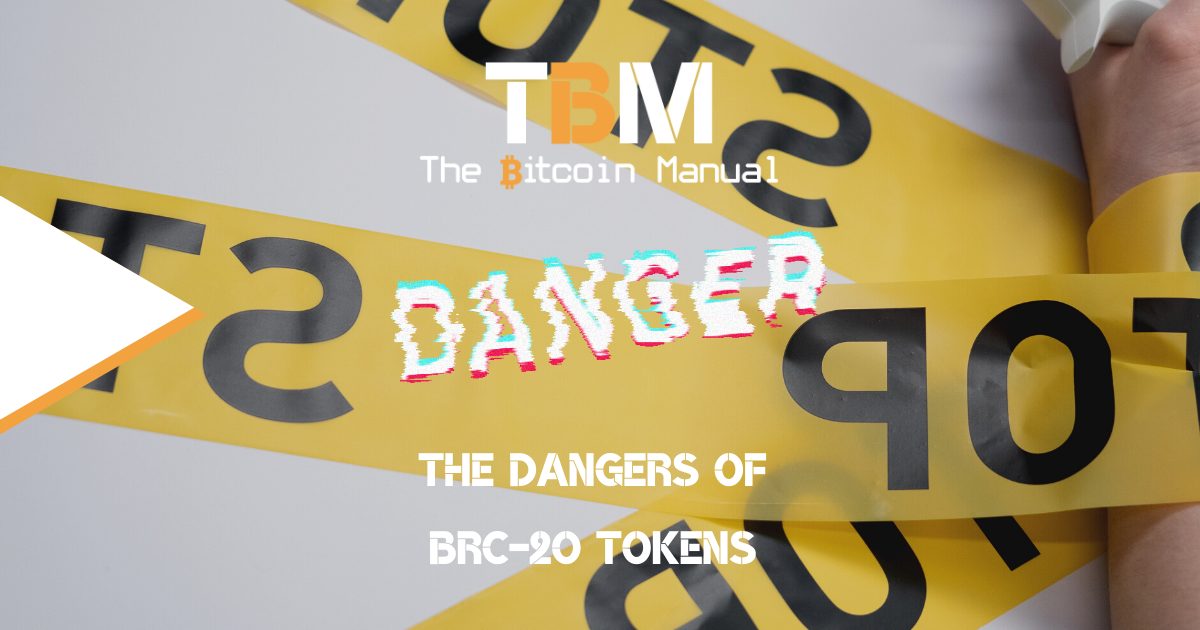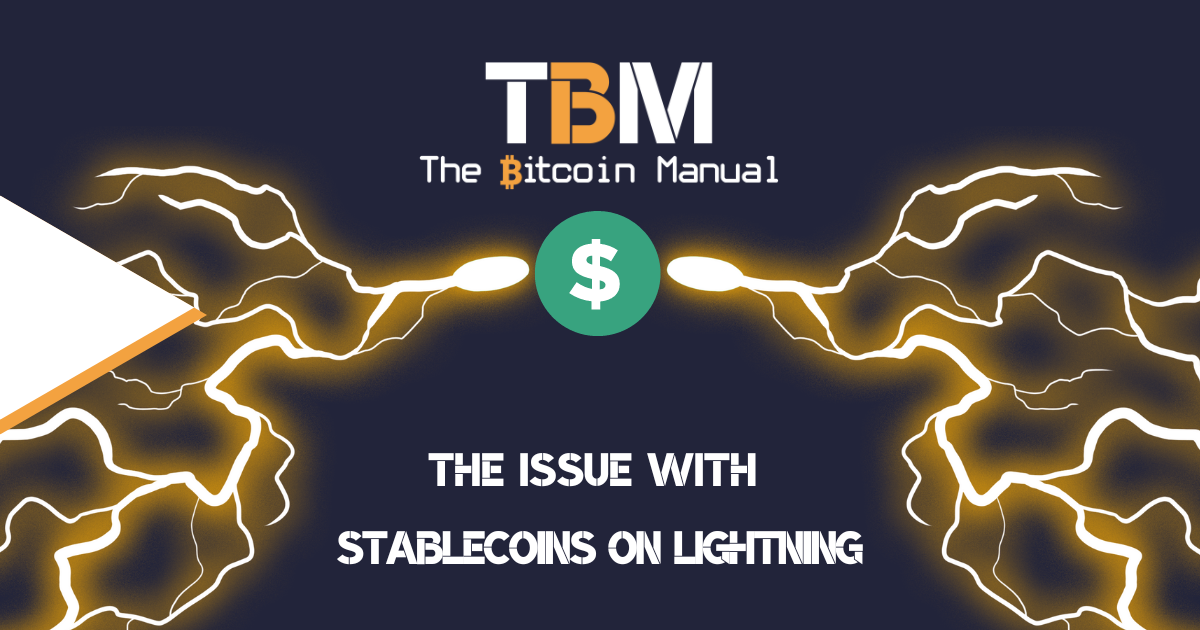Cryptocurrency markets have seen significant growth in recent years, with the introduction of numerous tokens and projects, finding life as a parasite sucking up demand and liquidity that would have otherwise gone into Bitcoin. For almost ten years, we’ve seen tokens come and go, all promising to be the next Bitcoin, and while they fail, they’ve made a tiny minority very wealthy in the process.
Token scams are seen as part of one’s journey into Bitcoin; many of us have made a mistake, got burned and learned that if you have to trust a third party in this space, you’re likely in troubled waters.
New chains and tokens are a dime a dozen; there are literally thousands of tokens, all relying on the unit bias of users that feel 1 Bitcoin is too expensive. These token creators and holders are also hoping that you, as a newcomer to Bitcoin, would feel you need to “diversify” by investing in different coins and sending some funds their way so they can exit their positions.
Amidst this explosion of tokens, the altcoin market has garnered a bad reputation of pump and dumps while Bitcoin continues on. But altcoin scammers aren’t going to go down without a fight; while their coins bleed out and the trend towards zero, the only option they have is to cleverly rebrand the same old scam.
Boomer coin is suddenly the place to “innovate.”
Isn’t it wild that a few years ago, the narrative was Bitcoin was old tech and a boomer coin, and ICOs, DEXs, and DEFI was the future, yet today all those failed ideas are starting to move across to Bitcoin in some way, shape or form?
Ordinals and inscriptions were the first to lay the foundation for the NFTs on Bitcoin hype, and now BRC-20 tokens have emerged, claiming to be a Bitcoin-based solution for creating and trading digital assets. However, there are several reasons why these tokens may not be as promising as they appear.
A quick search on YouTube for the term “BRC-20” will already display a host of open mouths with x100 and a graph in the thumbnail grifters promoting scams they’ve either created or got paid to promote. While Twitter has an army of Bitcoin haters with NFT profile pictures, foaming at the mouth and talking about how BRC-20 and 721 are going to bring the fun back into Bitcoin.
If the association of these grifters aren’t enough to put you off, here are some reasons why you might want to steer clear of this trend.
BRC-20 tokens are a Bitcoin affinity scam
First off, BRC-20 tokens have nothing to do with Bitcoin, the asset; it is merely a JSON script file added to the Bitcoin blockchain through the ordinals protocol. Allowing users to embed metadata that can be read back from the chain and transferred to one another by transferring Bitcoin. While technically, BRC-20 tokens exist in the Bitcoin blockchain; they are a secondary market that requires a different set of software to source, categorise and display from the blockchain.
BRC-20 tokens capitalise on the popularity and credibility of Bitcoin by associating themselves with the leading cryptocurrency. By doing so, they attempt to lure in unsuspecting investors who might believe that these tokens are as secure and trustworthy as Bitcoin itself.
However, this association is deceptive and misleading, as BRC-20 tokens do not possess the same level of security, decentralisation, or widespread acceptance as Bitcoin.
BRC-20 tokens are complex to manage
One of the primary selling points of Bitcoin is its simplicity and ease of use. However, BRC-20 tokens introduce unnecessary complexity to the process of managing digital assets. These tokens require a separate wallet, protocol and coin control to manage and additional steps to store and transact.
This complexity creates confusion for users and increases the risk of human error, which could lead to the loss of the file. This only encourages those who want to get involved to use a custodian instead of trying to do it themselves.
BRC-20 tokens encourage CEX trading.
As mentioned, BRC-20 tokens are pretty complex to manage for the average meta mask or exchange user; they’re simply not interested in putting the work in to manage these tokens, nor keen on paying the on-chain costs of trading them P2P.
Bitcoin also doesn’t have on-chain automatic market makers for these tokens to trade like you would see smart contract chains, so where do you go to get exposure?
A CEX, of course.
The complexity of managing a BRC-20 token correctly is music to the ears of exchanges since it encourages custodial management, and users will simply prefer to leave the UTXO tied to the BRC-20 token with an exchange, which will help them by increasing assets under management and better yet make fees off those trading JSON files etched in the Bitcoin blockchain.
Centralised exchanges (CEX) are known for their vulnerability to hacks, fraud, and other security issues. BRC-20 tokens encourage trading on these centralised platforms, exposing users to the inherent risks associated with them. By promoting the use of centralised exchanges, BRC-20 tokens undermine the core principles of decentralisation and security that make cryptocurrencies like Bitcoin appealing in the first place.
Cool‼️#Huobi supports brc-20🔥
— Huobi (@HuobiGlobal) April 30, 2023
The first exchange to vote for the brc-20 coin you support! Vote for your fav! $ORDI , $PEPE(brc20) or $MEME winner will be revealed in 2️⃣ days. #primevote #brc20 #Ordinals #MEME #PEPE
https://t.co/jjSay8f3UW
BRC-20 tokens are easy to produce.
Despite being built on Bitcoin, the Bitcoin blockchain cannot enforce any rules on a BRC-20 token; it’s merely a file that can be embedded and read from the blockchain, it has nothing to do with the consensus rules, nor does it require mining to produce.
The only cost involved is adding the file to the blockchain with a transaction and future transactions where you would move the UTXO associated with the tokens.
The ease with which BRC-20 tokens can be created might seem like an advantage at first glance, as it enables the rapid development of new projects and applications.
However, this ease of creation also means that the market can quickly become flooded with low-quality tokens that serve no real purpose or provide any value. As a result, investors may have difficulty distinguishing between legitimate projects and those that exist solely to take advantage of the hype surrounding this so-called token standard.
BRC-20 tokens confuse newcomers.
For those new to the world of Bitcoin, the sheer number of tokens and projects can be overwhelming. BRC-20 tokens, with their misleading association with Bitcoin, only serve to confuse newcomers further.
By obfuscating the differences between Bitcoin and BRC-20 tokens, new investors may mistakenly believe that they are investing in a secure and well-established network like Bitcoin, only to discover that they have put their funds into a risky and unproven token.
BRC-20 Tokens are trying to create an unregistered securities market on Bitcoin.
The altcoin market has been tirelessly tokenising everything and enjoying the regulatory arbitrage that is a grey market for unregistered securities; Bitcoin has remained the only asset you can trade on its chain.
Yet allowances have been made to create securities inside the Bitcoin ecosystem, which have not been very popular. Suppose you want to access the Bitcoin market with a securities offering. In that case, you can mint and trade security token offerings on the Liquid side-chain, but this requires a lot of regulatory compliance and isn’t ideal for building rug pull scams. It provides a clear distinction between Bitcoin and the STOs trading on layer two solution that settles in Bitcoin.
One of the most significant dangers of BRC-20 tokens is their potential to facilitate an unregistered securities market on the Bitcoin blockchain. By offering tokens that represent shares in a project, company, or other venture, BRC-20 tokens could effectively bypass regulatory oversight and enable the sale and trading of unregistered securities. This lack of regulation and oversight increases the risk of fraud and market manipulation, putting investors at considerable risk and could lead to increased scrutiny of Bitcoin.
This could also be used as an argument to state if Bitcoin is a commodity and has tokens trading on it, then other L1 chains are also commodities.
BRC – Bitcoin Rug Con.
While the idea of creating and trading digital assets on the Bitcoin blockchain may seem attractive, the reality of BRC-20 tokens is just another altcoin scheme trying to capitalise on the next cycle and divert capital that would have gone into Bitcoin into the pockets of scammers.
The dangers of BRC-20 tokens far outweigh any of the claimed benefits offered up by promotors; this is nothing about a new version of fools’ digital gold with a new lick of paint. The ground is being laid for the next halving, hoping that as Bitcoin moves towards another major repricing, these BRC-20 tokens and anything like it will be able to sell like hotcakes as speculation grips the market once again.
If you want to speculate on these tokens, and gambling is your thing, you can feel free to ignore these warnings, but if you’re after preserving your hard-earned money or trying to protect it against fiat currency devaluation, this is not the vehicle for you.
By avoiding these tokens and focusing on Bitcoin, investors can protect themselves from unnecessary risk and contribute to the growth and stability of the broader Bitcoin ecosystem, where actual progress is being made, such as building circular economies, demand response programs for better energy security, and so much more.
By holding Bitcoin in self-custody, you benefit from all the innovation being developed in the space; by holding BRC-20 tokens, you provide the exit liquidity for someone who managed to add a text file into the blockchain and convince you it has value.
So you decide which side you want to be on.
Do your own research.
If you want to learn more about BRC-20 on Bitcoin, use this article as a jumping-off point and don’t trust what we say as the final say. Take the time to research other sources, and you can start by checking out the resources below.
A token of no appreciation.
So what do you think of BRC-20 tokens? Will it take off and move more speculation to Bitcoin? Will the tooling used to create these standards become widely adopted? Or will this all fall flat on its face like previous attempts to add non-native assets on the Bitcoin base chain?
Let us know in the comments down below.




